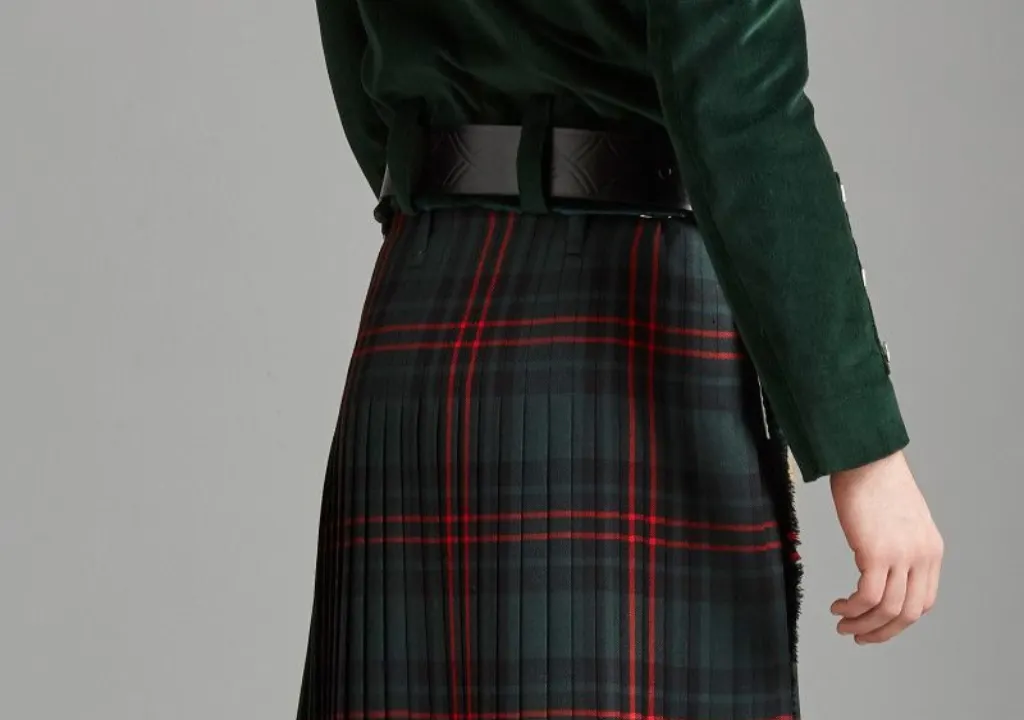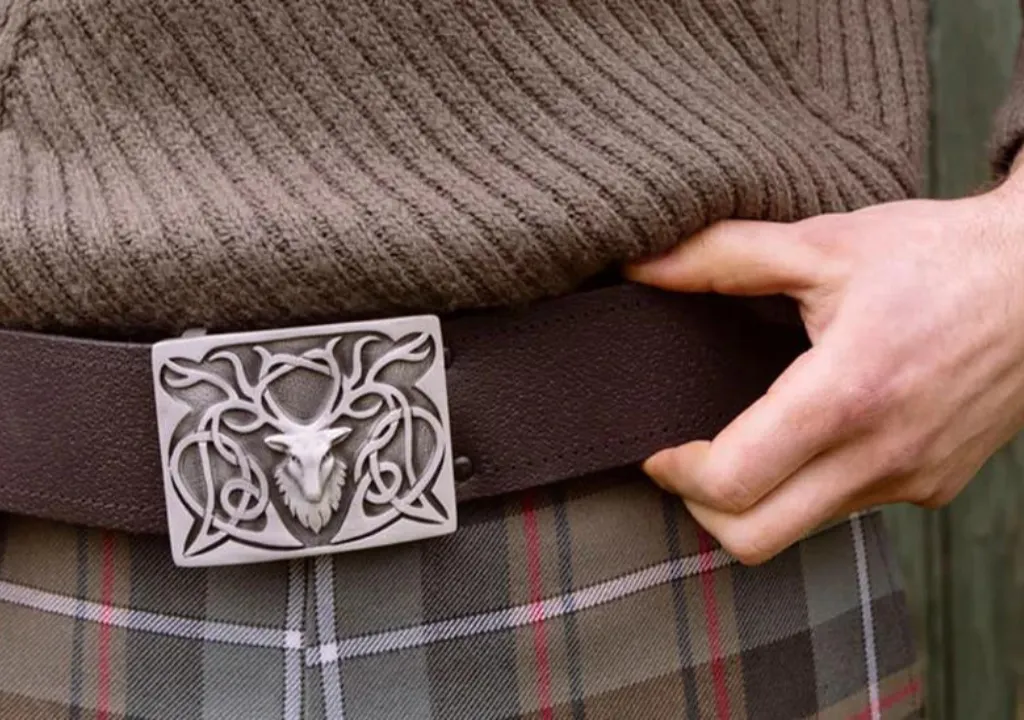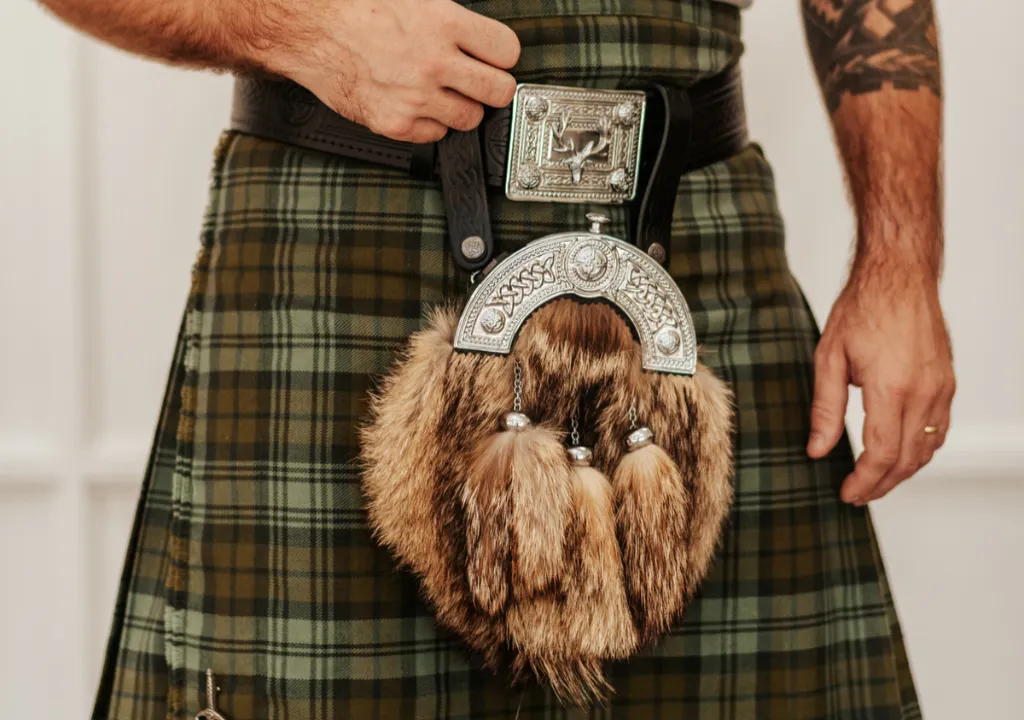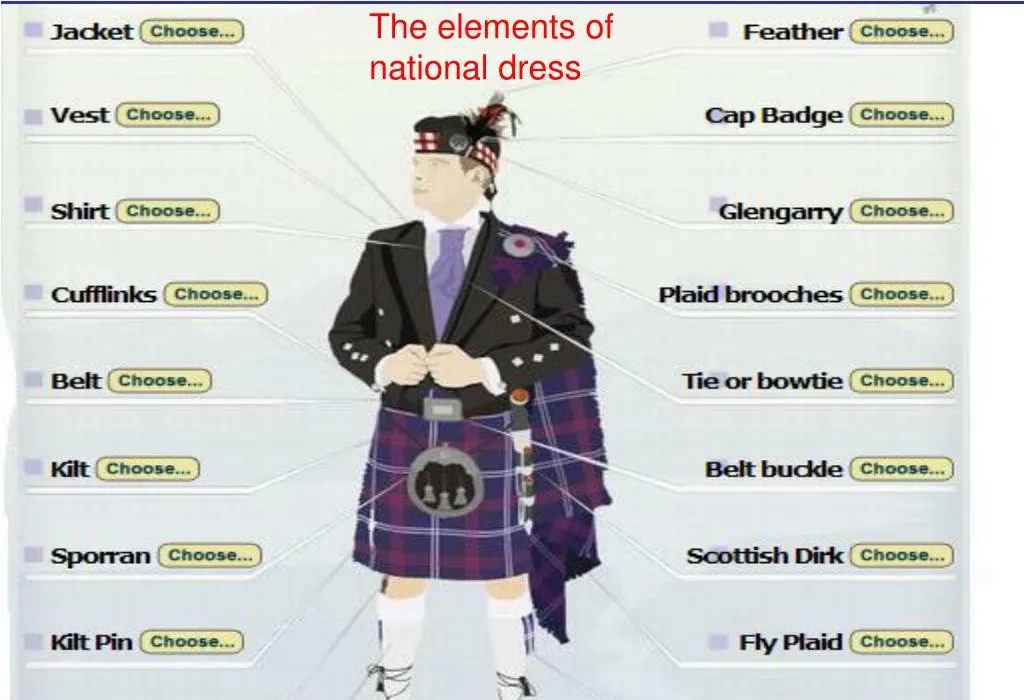Kilts are deeply embedded in Scottish heritage and culture, serving as a powerful symbol of centuries-old tradition and pride. Far beyond being a mere article of clothing, a kilt represents a profound statement of identity, skillful craftsmanship, and historical significance. Each kilt accessories tells a story, reflecting the rich tapestry of Scottish history and the meticulous artistry involved in its creation. It stands as a testament to the enduring legacy of Scottish culture, combining historical roots with a modern sense of pride and unity.
Brief History and Origin of the Kilt
The kilt, a knee-length skirt-like garment with pleats at the back, is synonymous with Scottish identity. Its origins can be traced back to the early 16th century in the Scottish Highlands. Initially, the kilt was a full-length garment known as the "Great Kilt" or "Feileadh Mòr," which was worn as both a cloak and a garment. Over time, the kilt accessories evolved into the more practical, tailored version known today as the "Small Kilt" or "Feileadh Beag."
Key Components of a Traditional Kilt
- Apron: The flat, unpleated section at the front.
- Pleats: Gathered folds at the back that allow ease of movement.
- Waistband: A sturdy band that helps keep the kilt in place.
- Straps and Buckles: Adjustable fastenings on the side.
- Belt: An optional accessory that adds style and support.
- Kilt Pin: A decorative and functional pin to secure the apron.
- Sporran: A pouch worn at the front for practical and decorative purposes.
The Kilt Apron
The apron is the part of the kilt that overlaps at the front. It's the most visible section and often the first thing people notice. The front apron is typically flat and unpleated, showcasing the tartan pattern. In contrast, the back apron, though similar in appearance, is usually hidden by the pleats.
Front vs. Back Apron Design
The front apron should lie flat without any wrinkles, presenting a clean and smooth appearance. The back apron, while also flat, plays a supporting role, helping to keep the pleats in place and ensuring the kilt wraps around the body correctly.The Pleats
Types of Pleats in a Kilt: Knife and Box Pleats
Pleating is one of the most intricate aspects of kilt construction. There are two primary types of wrinkles:
- Knife Pleats: These pleats are folded in one direction, giving the kilt a streamlined appearance.
- Box Pleats: Here, the fabric is folded in alternating directions, creating a box-like structure.
Pleating Patterns and Their Symbolism
The arrangement and depth of the wrinkles can vary depending on the desired fullness and movement. Pleating to the sett replicates the tartan pattern across the pleats while pleating to the stripe emphasizes a particular stripe within the tartan. Each style carries its own symbolism and visual impact, often reflecting the wearer's clan or family heritage.
The Kilt Waistband
Material and Design of the Waistband
The waistband is crucial for the kilt's functionality and comfort. Traditionally made from the same material as the kilt itself, it may be reinforced with additional lining to prevent wear and tear. The waistband typically features loops for the kilt belt, adding to the garment's structural integrity.

How the Waistband Affects Fit and Comfort
A well-constructed waistband ensures that the kilt sits comfortably at the natural waistline. It should be snug enough to stay in place but not so tight that it restricts movement. The right fit in the waistband is essential for the kilt's overall appearance and comfort.
The Straps and Buckles
Functionality of Straps and Buckles
Straps and buckles are found on the sides of the kilt, allowing for size adjustments and securing the garment in place. These components are typically made from leather or fabric, depending on the kilt's design and purpose.
Adjusting the Kilt for Proper Fit
The straps are essential for achieving a snug fit around the waist and hips. They allow the wearer to adjust the kilt for comfort, ensuring it neither slips down nor feels too tight. Properly adjusted straps help maintain the kilt's neat appearance and prevent it from moving during wear.
The Belt and Buckle
Purpose of the Kilt Belt
The kilt belt is a wide leather belt worn over the waistband, primarily for decorative purposes. It can also provide additional support, especially when the kilt is worn for physical activities or during formal occasions.

How to Choose the Right Belt and Buckle
When selecting a kilt belt, consider the width and design. The belt should complement the kilt's overall appearance and match other accessories such as the sporran and shoes. The buckle often features traditional Scottish motifs, adding a touch of personalization to the ensemble.
The Kilt Pin
Importance of the Kilt Pin
The kilt pin is a small but significant accessory. It is traditionally worn on the lower right corner of the front apron, serving both a decorative and practical function. The pin prevents the apron from flying open, maintaining the kilt's modesty and form.
Choosing the Right Kilt Pin
Kilt pins come in various designs, often reflecting Scottish symbols such as the thistle, clan crests, or Celtic knots. When choosing a pin, it's important to select one that complements the tartan and overall outfit. The pin should be substantial enough to hold the apron in place but not so heavy that it drags down the fabric.
The Sporran
The sporran is a pouch worn at the front of the kilt. Since traditional kilts lack pockets, they function as pouches. It is an essential accessory, adding both functionality and style to the kilt outfit.
Different Types of Sporrans and Their Uses
There are three main types of sporrans:
- Day Sporran: Simple in design, usually made of leather, and worn during casual or day events.
- Dress Sporran: More elaborate, often made from fur and decorated with tassels or metalwork, suited for formal occasions.
- Semi-Dress Sporran: A hybrid of the day and dress sporrans, appropriate for less formal events or when a touch of elegance is required.
Each sporran type serves a specific purpose and helps complete the kilt ensemble.

The Hose and Flashes
The Role of Kilt Hose (Socks) in Traditional Attire
Kilt hose are the long socks worn with a kilt, typically reaching just below the knee. They are an integral part of the traditional kilt outfit, usually in a color that complements the tartan.
What Are Flashes? How to Wear Them
Flashes are colored ribbons attached to garters, which hold up the kilt hose. They add a splash of color and are usually coordinated with the kilt's tartan. Flashes are worn on the outside of the hose, peeking out just below the turned-over top of the socks, and should be positioned so they align with the knee.
The Sgian Dubh
Understanding the Sgian Dubh (Small Knife)
The Sgian Dubh is a small knife traditionally worn tucked into the hose on the right leg. Historically, it served both a practical and ceremonial purpose, used as a utility knife and symbol of honor.
Historical and Modern Significance
Today, the Sgian Dubh is largely symbolic, often carried as part of the full kilt outfit during formal events. It typically features a decorative handle and may be engraved with clan crests or other Scottish symbols. While its practical use has diminished, it remains a respected and iconic element of traditional Scottish dress.
Cultural Significance of Kilts in Scotland
Kilts are more than traditional attire; they are a symbol of Scottish pride and unity. Each kilt often carries a tartan pattern that represents a specific Scottish clan. This practice gained popularity in the 19th century. Wearing a kilt is not just about embracing a fashion statement but also about connecting with one's ancestry and heritage.
Overview of Kilt Construction
A traditional kilt is made from several yards of woolen cloth, usually about eight to nine yards long. The cloth is pleated and wrapped around the wearer's waist, fastening with straps, buckles, and sometimes a belt. The unpleated section of the kilt, known as the apron, overlaps at the front.
Conclusion
In conclusion, the kilt accessories is more than just part of tradition; it is a vibrant symbol of heritage and identity. Each element, from the apron and pleats to the sporran and sgian dubh, reflects a rich history of craftsmanship and cultural pride. The kilt’s intricate design and components embody centuries of Scottish tradition, connecting wearers to their ancestry and community.
Whether worn for formal occasions or cultural celebrations, the kilt remains a powerful expression of Scottish pride and artistry, seamlessly blending history with contemporary significance. Embracing the kilt is embracing a timeless legacy of Scottish heritage.
FAQs
A kilt is composed of several distinct parts. The main section, known as the body or pleats, is pleated at the back to create its signature draped appearance. The front panel, called the apron, is where the tartan pattern is prominently displayed. Additionally, the waistband secures the kilt around the wearer’s waist, while the fringe at the bottom adds a decorative touch. Together, these elements combine to create the classic look of the kilt.
A kilt is characterized by several distinctive features. It is typically made from tartan fabric, which is a patterned wool cloth with horizontal and vertical stripes in various colors. The kilt is pleated at the back to allow for ease of movement and a distinctive draped appearance. The front is flat with an apron-like panel that displays the tartan pattern prominently. It is fastened at the waist with a belt or buckles and often includes a decorative fringe at the hem. Kilts are traditionally worn with a sporran (a small pouch) hanging from the front and may be accompanied by other accessories like kilt pins and flashes.
A traditional kilt typically has around 8 to 12 pleats at the back. The exact number can vary depending on the kilt’s design and the size of the wearer. These pleats are designed to provide freedom of movement and create the characteristic draped appearance of the kilt.
A traditional kilt is primarily made from wool, specifically woolen tartan fabric. This material is chosen for its durability, warmth, and ability to hold the pleats well. While wool is the classic choice, modern kilts may also be made from synthetic fabrics or blends for various reasons, including cost, ease of care, or specific performance needs.


